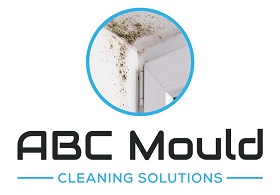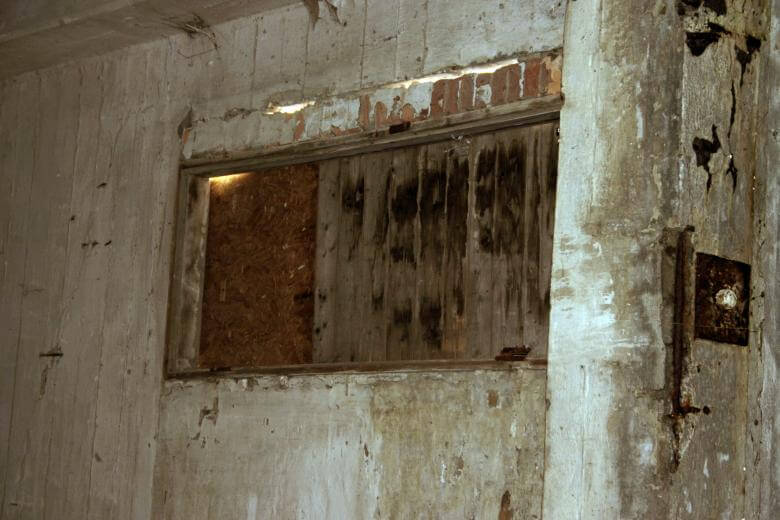Mould Problems In Real Estate
Perhaps you are house-hunting and you find a house that you like. However, what if there was something sinister lurking in the backdrop? Because often, like plenty of things, first appearances are not necessarily quite as they look.
We’re taking a look at mould problems. That dreadful patchy nightmare which only seems to multiply and multiply how hard you try to eliminate it. In addition to why you need professional mould removalists in handling mould removal.
That dreadful visual reminder that something within the residence is not quite perfect. It turns into a constant concern. You may smell something’s incorrect, you may observe the mould. However, you cannot for the life span of you determine what’s causing it.
It is even tougher in a new residence. You do not understand the house’s history. How well it is ventilated. Furthermore, if you did not opt for the bells-and-whistles poll. Hence, you won’t understand whether there are any water issues.
Buying A Home With Mould
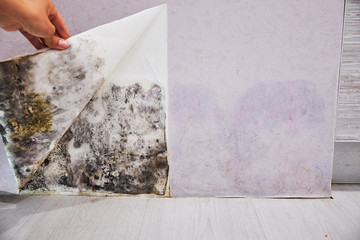 Having a new house just to find out there is a mould problem when the furniture has been removed is not a fantastic place to end up in. As stated previously, there are numerous questions which have to be asked to learn what’s causing the mould and the way to prevent it.
Having a new house just to find out there is a mould problem when the furniture has been removed is not a fantastic place to end up in. As stated previously, there are numerous questions which have to be asked to learn what’s causing the mould and the way to prevent it.
Mould More of a Symptom than an Issue
Mould itself, although it investigates organic substance and can induce health problems, is not the issue you want to focus on. While the mould will require addressing, there is very little point until the main root cause can be found and treated. Otherwise, the mould will only return again and again.
However, what if it is only a little patch at the corner or area of the current room?
At first, it might appear in an insignificant volume. However, lies with the truth that there might be considerable growth under the face of the surface which you cannot view. Like indoors cavity walls, under floorboards, another facet of a ceiling. Visual analysis is not sufficient to ascertain the real extent of mould growth.
Not convinced? However, what we discovered when we raised the floorboards will surprise you. We did not anticipate exactly how much fungal expansion there could be.
The Causes of Mould Growth
As stated previously, mould is your symptom of moisture. Therefore, before you try to cure it, you want to first find the origin of it.
Mould can only increase when there’s excessive moisture from the atmosphere. This means there might be a damp problem or even a flow.
Condensation is the largest moist problem that leads to mould growth. It happens when water accumulates as droplets to a chilly surface when warm air is connected with it. You will normally find it on windows, particularly during the winter.
Where to Find Mould
Mould also regularly climbs over the corners of an area and on north-facing walls. It may even be located behind large objects like beds and wardrobes in the example. Furthermore, areas which don’t have much ventilation, particularly when up against an outside wall.
However, what if you can’t find any apparent signs of condensation or leak? How can you possibly recognize the origin of excess moisture then?
Spot places where you can find high levels of moisture. It is going to supply you with the essential information to recognize causes. Therefore, so you understand what needs fixing before handling the problem of mould. Mould removal will be ineffective until the moisture is managed, otherwise, there is a higher risk of it coming back.
Risks of Ignoring Mould
While we mentioned earlier that mould is a symptom of moist and should not be the very first matter addressed, it must never be dismissed. When the source of the moisture was diagnosed and treated, then should the mould.
Does mould eat away at natural substance (which may ultimately jeopardise the substance’s integrity)? Furthermore, mould poses many different health risks, particularly to the elderly, children, and people with compromised immune systems.
Moulds and Its Toxicity
Not all mould is poisonous. However, some types can discharge mycotoxins that can make you seriously ill.
This is often wrongly known as the poisonous black mould. Hence, in actuality, mould strains which produce mycotoxins could be any colour. It’s not possible to understand whether the mould in your house is poisonous without lab testing, you can’t go by colour alone.
There are conflicting views over the intensity of illness that mould can cause. Mould can also be cited as a reason for asthma attacks.
Contact Professional Mould Removalists
If your new house is suffering from damp and mould and you are feeling overwhelmed. You can contact professional mould removalists to further help you regarding your mould issue.
How Harmful Is Household Mould? – Expert Mould Removal In Sydney
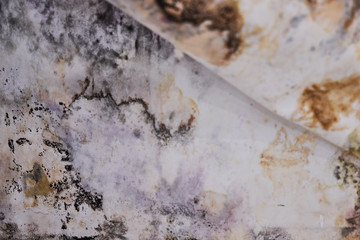 When it’s a chilly moist winter or a hot humid summertime. These can lead to moisture inside your home and the overall growth of mould.
When it’s a chilly moist winter or a hot humid summertime. These can lead to moisture inside your home and the overall growth of mould.
Mould can grow on walls, clothing, toys, books, as well as CDs. It may turn precious possessions into temperate relics that just look fit for your garbage.
What risks can mould happen on an individual’s body?
This report looks at how mould grows, why it develops, its effect on an individual’s wellbeing, and how to prevent it.
What is Mould?
Moulds are a sort of fungus. There are several distinct types, and they can happen both indoors and outdoor environments.
Mould spores are found in all indoor environments. There’s not any method to stop spores, and they’re able to persist in states where mould itself can’t rise.
Mould spores thrive in environments which are warm and moist, so whenever they land on a damp spot, they start to grow.
Moulds can grow on several different surfaces, such as fabric, wood, paper, glass, and vinyl. As they develop, they can eat away through time the substance they’re growing into.
Types of Mould
Nobody knows just how many types of mould you will find. However, experts estimate that there might be different kinds. Some are far more prone than others to look in the house.
Moulds take several textures and forms. They may be black, white, blue, yellow, or green and frequently seem like stain or discolouration to a surface.
They’re also able to have a velvety, fuzzy, or demeaning look based on the kind of mould and where it’s growing. Moulds often found indoors are:
Penicillium: This tends to grow on materials with water damage. It frequently has a blue or green colour.
Cladosporium: This may grow in cool or warm locations. It tends to grow on materials and wood surfaces.
Alternaria: This happens in moist places, like showers or beneath leaky sink pipes.
Aspergillus: This frequently develops inside, on dusty, powdery food products, and construction materials.
Health Risks Mould Bring
Mould may pose a great health issue. Most particular for those who have an allergy, a present respiratory difficulty, or a weakened immune system.
Allergy Problems
Someone having a sensitivity or allergy to some mould-related particles may have allergic reactions.
Mould allergies may produce similar symptoms to other allergies, like hay fever, or even seasonal allergies. Furthermore, airborne compounds could affect the upper respiratory tract.
People who have a mould allergy in addition to asthma have a greater possibility of getting an asthma attack if there’s mould in the surroundings.
Breathing Issues
As mould grows, pores cells, fragments, and unstable organic chemicals may enter the atmosphere. A number of them may be poisonous, particularly to those that have a sensitivity to them.
Additionally, dampness promotes substances to crack down, raising the number of contaminants, or dust, at the atmosphere.
These particles may irritate the nose, lungs, and throat, particularly in someone who currently has breathing difficulty, asthma, or chronic lung disease.
Hiring Professional Mould Removalists
When thinking about the ideal approach to prefer mould removal. Hence, it is always best to hire a professional mould removalist that you can count on to manage the mould remediation for you.
Mould Removals Sydney is all about the plausible effects, giving an overall value which not only fixes issues but also prevents them.
Mould In Real Estate – Who’s Going To Take Care Of It?
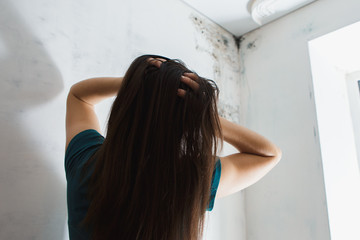 Mould in leased homes is a common issue largely as a result of lack of misinformation and knowledge.
Mould in leased homes is a common issue largely as a result of lack of misinformation and knowledge.
There were reports of tenants falling gravely ill because of mould infestations, and landlords supposedly not taking the matter seriously.
If mould is intentionally left untreated, the issue could be taken to court. It is often that the house manager or real estate representative held accountably. In addition, the fact that it has been reported and action we’re not taken.
However, when the tenant is fully informed and has occupied the property they should take reasonable care to prevent any issues.
Responsibility Of Landlords On Mould Problems
Under the law, landowners acting as the landlord should keep the structural integrity, health and safety requirements. Furthermore, guarantee repairs are undertaken in a fair period
As a landlord, you might be facing a breach of the lease agreement if mould develops because of not replying to maintenance issues reported by the tenant.
Responsibility Of Tenants On Mould Problems
If you are leasing a property, you need to maintain your leasing property at a reasonable state of cleanliness. Allow your landlord or realtor know about any damage or issue, whenever possible.
The trick to maintaining your rental house free of mould is common sense. If you are a renter, maintain your house reasonably clean and remain in contact with your landlord. Inform them in writing when you notice mould in your property.
Getting Rid Of Moulds – Expert Mould Removal In Sydney
The best solution for your situation will depend on which sort of mould you are having trouble with. The surface which it is on and the degree to which it’s spread.
More significant mould issues are best managed by professional mould removalists. Furthermore, notice that although some mould can be removed in the house? In an instance, by carrying out jagged boards or carpets. In some, it may never be eliminated, and that’s why eliminating it is the only process.
Basement
To eliminate mould in the cellar. Wash the walls with a brush, and also remember that porous surfaces like ceiling tiles or shingles may want to be eliminated and replaced.
If cellar carpeting is now muddy, sweep it to loosen the mould (use a mask) and let it dry in the sun if you’re able to move it, or utilize high profile fans to remove moisture if it is affixed to the ground.
Kitchen
To stop mould from the kitchen. Open windows to enhance venting and operate the hood port when cleaning and cooking. Wipe water from hard surfaces after performing dishes for instance, and fix leaky faucets as soon as possible.
Always ensure that your tableware and serving dishes are dry before storing them to keep mould from proliferating in closets. Scrub mould from surfaces when it seems, then make sure you wash the area to stop it from spreading.
Shower & Bathroom
To stop mould from the bathroom. Be certain that you open windows if you’ve got these, to improve ventilation. In addition turn on the fan when showering, shaving or cleaning.
Wipe off water hard surfaces, such as shower countertops and walls, and mend plumbing leaks whenever possible. Scrub mildew from surfaces when it seems, then make sure you wash the area to stop it from spreading.
Attic
To stop mould from the attic. It is significant to confirm the roofing to relieve problems that could lead to moisture entering the loft, including roof leaks, elevated shingles and openings in skylights.
Home Exterior
External mould of the home isn’t only unsightly it may also finally migrate into the interior and lead to additional harm. A frequent location where mould can appear on the outside of a house comprises the decks. Therefore, clean it using detergent or other mild cleaning solution along with a power washer.
Clean wood or vinyl siding with power washing or scrubbing with a brush hydrogen peroxide is a fantastic alternative option as it will not damage your landscaping. Rinse the siding, spray on non-toxic mould remover, let it sit while the mould begins to crack, then wash it off.
When to Call Professionals?
It is vital to act quickly as soon as you spot mould and remove it completely. It is smart to call professional mould removalists if you’re any doubt.
Mould Removals Sydney offers the highest quality of services in removing mould. You can contact us here. You can also know more about us here.
